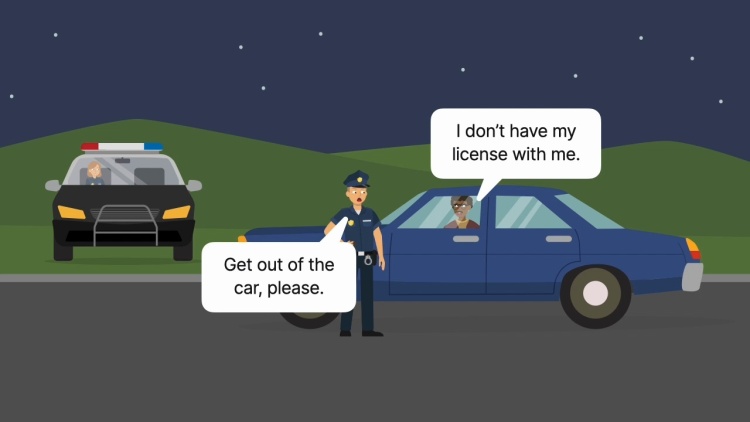Texas v. Brown
United States Supreme Court
460 U.S. 730 (1983)
- Written by Liz Nakamura, JD
Facts
Around midnight, Tom Maples (plaintiff), a Texas (plaintiff) police officer, stopped Clifford Brown’s (defendant) car as part of a routine driver’s license checkpoint. Maples stood next to Brown’s driver’s side window and shone his flashlight into the car. Maples saw Brown remove an opaque, tied-off balloon from his pocket and drop it onto the driver’s seat. Brown then reached over and opened his glove compartment. Maples shifted position outside the car to better see inside the glove compartment and observed a quantity of loose white power, several small plastic vials, and an open bag of party balloons. Because Maples had prior experience with narcotics arrests, Maples knew that narcotics were often transported and sold in tied-off party balloons. After Brown told Maples he did not have his driver’s license, Maples ordered Brown to exit the car. After Brown exited the car, Maples picked up the green balloon Brown had dropped on the driver’s seat and observed that the tied-off section contained a powdery substance. Maples arrested Brown for drug possession and seized both the tied-off balloon and the items in the glove compartment. Brown moved to suppress the evidence Maples seized. Texas countered, arguing that the plain-view exception allowed Maples to seize the incriminating items from Brown’s car without a warrant. At the suppression hearing, a police department chemist testified that the substance in the tied-off balloon was heroin and corroborated Maples’s testimony that narcotics were frequently transported in tied-off balloons. Brown was convicted of heroin possession. Brown appealed, and the Texas Court of Criminal Appeals reversed, holding that the plain-view exception did not apply because the incriminating nature of the tied-off balloon was not immediately apparent. Texas appealed to the United States Supreme Court.
Rule of Law
Issue
Holding and Reasoning (Rehnquist, J.)
What to do next…
Here's why 899,000 law students have relied on our case briefs:
- Written by law professors and practitioners, not other law students. 47,000 briefs, keyed to 994 casebooks. Top-notch customer support.
- The right amount of information, includes the facts, issues, rule of law, holding and reasoning, and any concurrences and dissents.
- Access in your classes, works on your mobile and tablet. Massive library of related video lessons and high quality multiple-choice questions.
- Easy to use, uniform format for every case brief. Written in plain English, not in legalese. Our briefs summarize and simplify; they don’t just repeat the court’s language.





